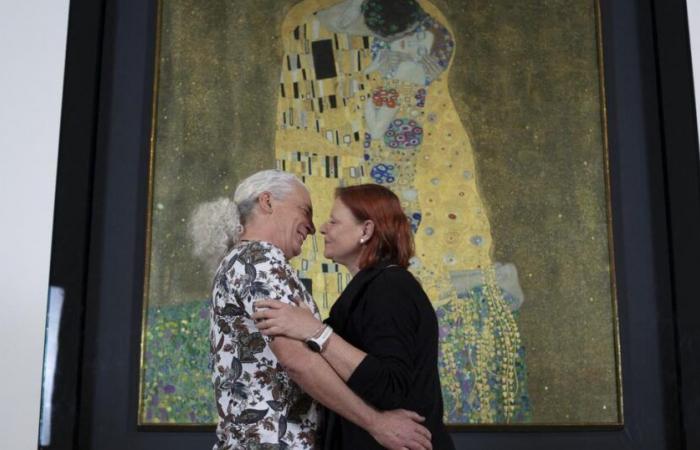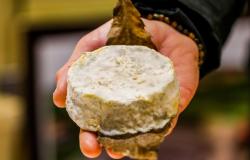ALEX HALADA / AFP
This beautiful British documentary deciphers the best-known painting by the Viennese Secession painter, an undulating celebration of nature. To see this Sunday, November 3 at 5:50 p.m. on Arte.
The Kissa flamboyant square canvas, painted around 1908 by the Viennese Gustav Klimt (1862-1918), jewel of the Belvedere Palace in Vienna, is one of the most admired and reproduced paintings in the world, a heavenly vision with multiple mosaic effects that define the masculine, the feminine and nature. Created in a period of doubt by this stocky and ardent seducer artist, this portrait of a couple who blends into the decor draws on different sources (Byzantine mosaics, Art Nouveau, Greek mythology, Japanese art) and marks the apogee of his “golden cycle”. It is much more mysterious than it seems, analyze art historians, in this beautiful documentary on this bubbling end of the century in Austria.
The second of a poor family of seven children, born on July 14, 1862 in a suburb of Vienna, Gustav Klimt grew up in an imperial city where the working class and its numerous migrants lived in appalling conditions. After a classical course where his gifts for drawing did not go unnoticed, he trained at the School of Applied Arts in Vienna. There, he studied the human body, traditional anatomy, and imbued himself with the principles of the social virtue of painting advocated in particular by William Morris in Victorian England. A question soon arises for this exceptional designer: how can we improve the world and its society through his work?
Artistic crisis
This young painter and decorator of public buildings reached his artistic maturity at a time of great change in Vienna. He made a name for himself very early on by adorning, with a lot of mythology and theatrical poses, the new Ringstrasse, an immense circular avenue of 5.3 km built during the historicist era, between 1860 and 1890, on the route of the old fortifications medieval which protected the seat of power for more than six centuries. The Parliament, the Stock Exchange and the Opera were built there. Klimt works at the Burgtheater and the Kunsthistorisches Museum.
An artistic crisis gripped him. First inspired by this architectural showcase with prestigious commissions, Klimt brutally broke with academicism, this cult of goddesses and other immortals who, from Greek Antiquity to Shakespeare’s Globe Theater, hieraticly dominate the spectator from the top of their frescoes. Within the Viennese Secession, an avant-garde movement that he co-founded in 1897, Klimt, himself the son of a goldsmith, advocated the abolition of barriers between fine arts and decorative arts. Everything changes. In France, it was impressionism that shook up the codes. Same in England, with Arts and Crafts.
The naked bodies of the creatures writhe like snakes in Faculty Paintingsa set of three works begun in 1900, completed in 1907 and destroyed by fire in 1945. The Klimt of Philosophy shocks the Viennese bourgeoisie with its macabre and incandescent eroticism. There are a lot of Jugendstil elements, this style which aims to celebrate nature with undulating, organic and liquid lines.






